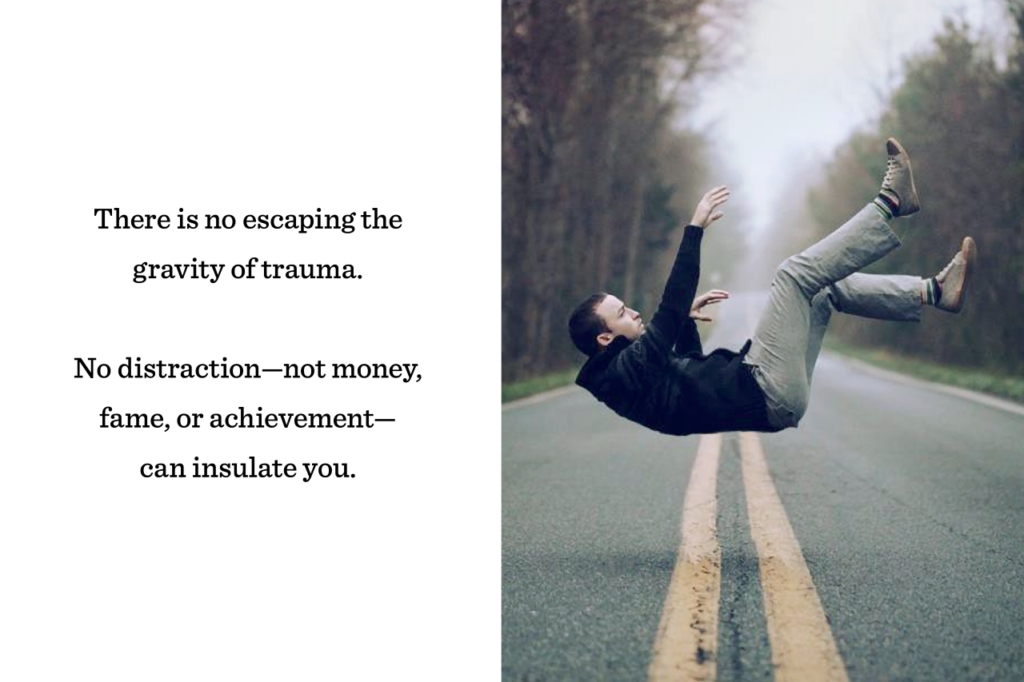Fifty-five billboards on the road to recovery
The essential message of this book is that trauma is very much a part of life. Deborah Korn and Michael Baldwin wrote it as the collective trauma caused by the pandemic unfolded. Korn is a psychologist and EMDR Consultant and Michael Baldwin is a former EMDR client with a professional background in advertising. Their unique experiences make Every Memory Deserves Respect shine out from other texts and its clever title reminds us of EMDR’s unique approach to the reprocessing of traumatic memory.

One of the 55 arresting “billboards”
Clients, either in therapy or contemplating therapy, are the intended audience. However, this book has already proved an invaluable resource for me and my colleagues as EMDR practitioners. Understanding how trauma affects mind, body, behaviour and brain is an integral part of EMDR therapy and, as a practitioner, I am forever on the lookout for resources that might help me get this across to my clients.
So, what what’s unique about this book? Baldwin’s advertising background is evident as soon as you open the book. There are no fewer than 55 ‘billboards’. Each billboard comprises a large and captivating image above a pithy phrase encapsulating a critical message pertaining to trauma and recovery. These images do not merely focus the attention on what is important but also provide regular breaks readers who can find self-help texts rather overwhelming.
The seven chapters set out what trauma is, how it affects us and how EMDR can enable recovery. Each begins with Baldwin sharing the experience of his own trauma and therapeutic journey, followed by Korn’s careful unpacking of the scientific evidence base that helps us make sense of his experiences. Along with the billboards, this combination manages to inform readers about trauma and recovery in plain language whilst successfully avoiding any trace of patronising them. Tucked away between the last chapter and the acknowledgements, is a list of resources that Korn most regularly recommends to clients, which is invaluable both for clients and practitioners.
This book is an incredibly rich resource for prospective and existing EMDR clients. It has already improved how I deliver the psychoeducation that is so much a part of our work as EMDR practitioners, consultants and trainers.
As companions to this text, Shapiro’s texts Getting Past Your Past (2012) and EMDR: The breakthrough Eye Movement Therapy for Overcoming Anxiety, Stress and Trauma (2016) are worthy of a mention here. However, for me Baldwin and Korn’s clear, friendly style, combined with the use of billboards makes it more accessible, to those like myself, who learn visually and may not assimilate information as effectively via the written word.
Finally, it is worth noting that any exploration of trauma and recovery can bring the past into the present for the reader. One size never fits all and so assessing the fit between client and resource must be carefully considered.
References
Shapiro, F (2012) Getting Past Your Past. Rodale Books, New York.
ISBN: 978-1-60961-995-4
Shapiro, F and Silk Forrest, M (2016) EMDR: The Breakthrough Eye Movement Therapy for Overcoming Anxiety, Stress, and Trauma. (Updated Edition) Basic Books, New York.
ISBN: 978-465-09675-6 (2016 Edition)




